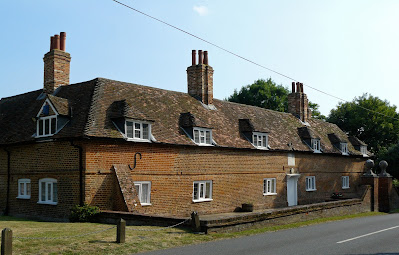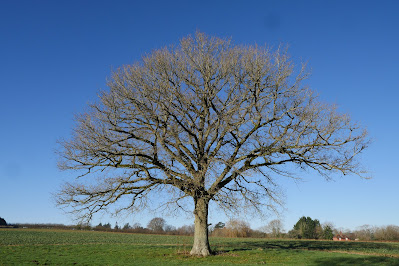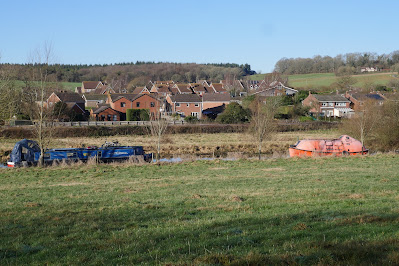We have just been to Milton Keynes to see an excellent exhibition of works by Dame Laura Knight and decided to have a walk around Buckingham on our way back home. We parked in the main car park and headed towards the Old Gaol. It was built in 1748 in the style of a castle with later additions in 1839 by George Gilbert Scott. It is now a tourist information centre, gift shop and venue.
We doubled back to see a bit of London Road, which we had come in on. These cottages were quite picturesque.
Retracing our steps, we passed the Gaol on our right and paused to look at Christ's Hospital. The original site goes back to the 15th century and Christ's Hospital was founded in 1597 by Queen Elizabeth I to house maimed soldiers. It was rebuilt in 1897 and was heavily refurbished and modernised in 2013, marked by a plaque from the Queen.
... to reach the Old Town Hall, crowned by its Golden Swan. It was rebuilt in the 18th century. The ground floor was originally open and housed the market. The light unfortunately was coming from behind: never a good idea for photography.
We continued to the right of the Town Hall and walked up Castle Street, passing Barton's Chantry and Hospital on the right. Originally six almshouses founded by John Barton in 1431, they were rebuilt in 1701 and in the late 19th century. There are now only three.
We continued onward passing a house with delightful sunflowers in the gable end, originally done in 1875. It looks as though they were renewed in 1987.
We continued towards the Church of St Peter and St Paul on Castle Hill (long ago there was a Norman castle here). The church was consecrated in 1780. It is quite an imposing building from the outside - we didn't have time to view the interior. The combination of a long nave and tall tower weren't ideal either!
Going on past the church we came on the Manor House. It dates from the 16th century and was originally built as a prebendal house but soon (during the dissolution of the monasteries) in became privately owned.

I have often (OK, once or twice) wondered what exactly a prebendary was. The answer is (courtesy of Wikipedia): "a member of the Roman Catholic or Anglican clergy, a form of canon with a role in the administration of a cathedral or collegaite church. When attending services, prebendaries sit in particular seats, usually at the back of the choir stalls, known as prebendal stalls.
A prebend is the form of benefice held by a prebendary: historically, the stipend attached to it was usually drawn from specific sources in the income of a cathedral's estates. In the 21st century, many remaining prebendaries hold an honorary position which does not carry an income with it."







































